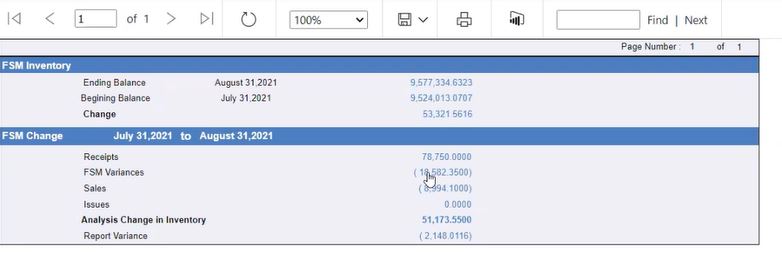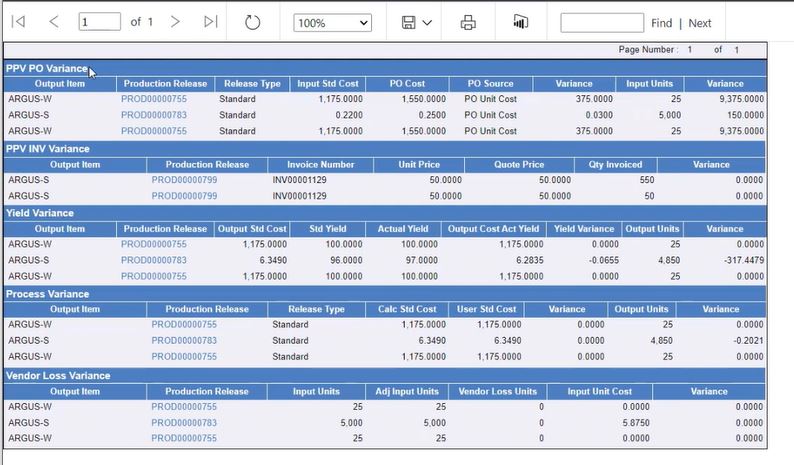Most companies in the semiconductor industry typically use the Standard Costing method and so we have a great deal of experience using it. In fact, Tensoft SemiOps uses the Standard Cost model. You set up a goal or standard for what you expect to pay your vendors or what you expect the output yield to be as your items move through the production assembly process. So, any variances from these will incur a standard cost variance.
Usually, the month end process starts by looking at the change in the inventory value between two points in time. The Inventory Change Summary report in Tensoft SemiOps shows you the inventory balances, the change between the two inventory values as well as the explanation of the change. This includes the cost driver of your cost of goods sold that you incur when you receive items and the variances that are incurred.

The screenshot above shows the inventory value at the end of July compared to the inventory value at the end of August.
Types of Variances
Tensoft SemiOps calculates five variances at the time of receipt and one at the time of invoicing. The Variance Calculation Details report in the Cost & Variance Analysis section in SemiOps shows each of these variances split into their own section.

PPV PO Variance
This variance calculates the difference between what you pay the vendor versus what you expected (standard cost) to pay the vendor. To calculate the variance of change in inventory, you multiply the difference with the input units.
PPV INV Variance
This variance calculates the difference between received invoice and the actual price you paid in the quote. To calculate the variance, you multiply the difference by the invoice quantity.
Yield Variance
This is the difference between the standard yield to be set for this production attribute set versus the actual yield that you received. To calculate the overall yield variance, you multiply the difference by the output units.
Process Variance
This is the difference between what the system calculates for cost for your steps rolled down (cumulative standard cost) versus an entered standard cost that a user can specify. Since Tensoft system calculates in eight decimal places, you will at times notice some minor values from rounding.
Vendor Loss Variance
When the items are reworked, it’ll take the value of the reworked item on top of the cost it takes to rework it and calculate this variance.
These costs variance reports in SemiOps are great for financial analysis. They provide insights to what happened during the production assembly process and executives can use that knowledge to refine the processes.
To learn more about inventory valuation and product costing in Tensoft SemiOps, read this fact sheet or contact us!